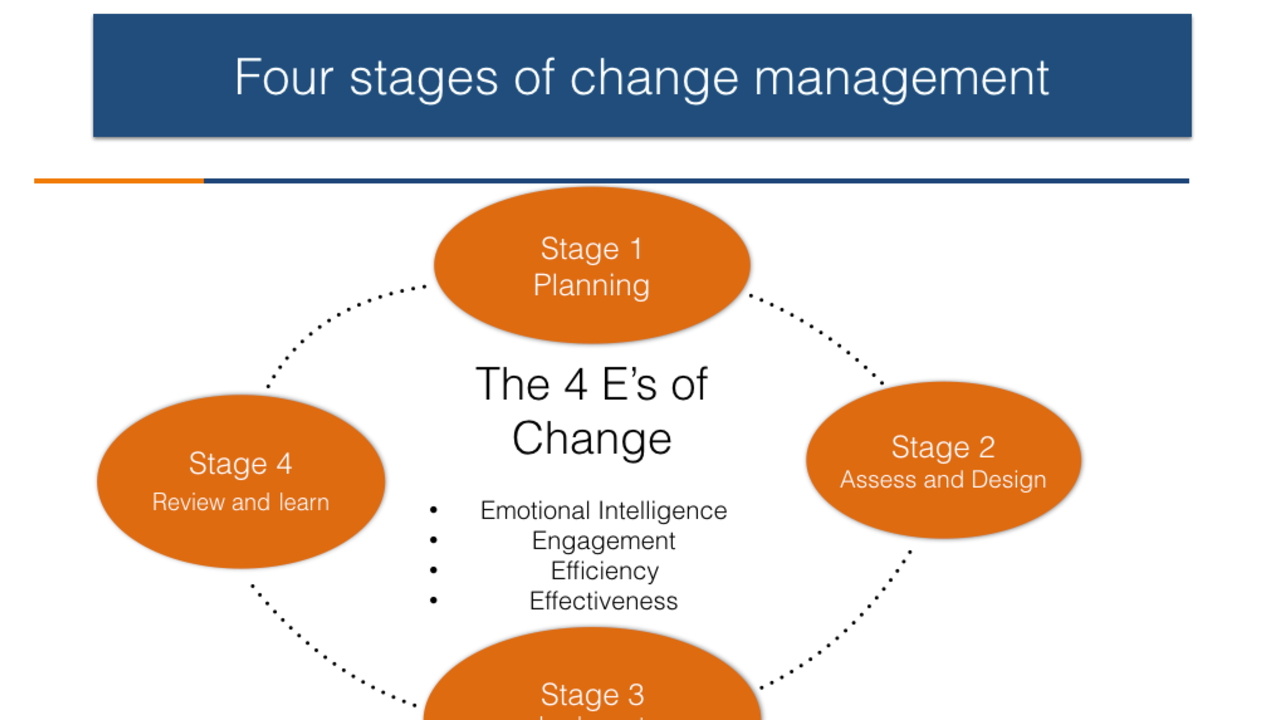The Change Process

Organisations are built on processes. Whether you are in service provision or consumer product provision, everything is a process. By following a process you achieve efficiency when the process is simple, streamlined and consistently applied. Having a Change Framework or a standard change process in your organisation to support the change function in your organisation is important. Especially if you have Change contractors in your organisation. By achieving consistency in approach, stakeholders will know what to expect and what to ask for.
Change management and Project Management are both processes and frameworks that compliment each other. The Change process can be aligned to that of Project management. Following is an overview of the four stages of Change Management:

Stage 1: Planning
Just like in Projects, a Change strategy and approach needs to be worked through with key stakeholders in a planning phase alongside the project team. In this planning stage of the change process, you are really looking to create clarity for the program and set the tone for the Change approach.
Stage 2: Assess and design
The devil is in the detail so you need to conduct a detailed impacted assessment following on from your high level assessment taking place in the planning stage. From this assessment you can design your change response. You will then have a detailed change and communications plan ready to for implementation.
Stage 3: Implement and Reinforce
This is a key stage where the Change plan and the Change Manager needs to be responsive - not reactive. In this stage it is critical to have feedback loops established and working well. You will also have Change measures in place which should be working for you to collect to measure your change responses.
Stage 4: Review and learn
In this stage of the process you are gathering all of the feedback and data collected through your implementation stage to analyse and put forward recommendations on what you would do differently next time. This is one stage which is often undervalued which actually yields bonus value for the business if well tended.
Similar to Project management, by following the process and having structure around your Change discipline you are able to better respond in a flexible way to the challenges that are ever present when you are introducing the change - the human behaviour component. By having a plan which at it's core is an output of your change impact assessment, you are setting yourself up for success however you need flexibility to address possible change resistance which may eventuate at different times.
Continual improvement then can be a focus as the change process takes care of itself and is repeated time and time again. Before you know it, the Change maturity can then begin to grow, with everyone understanding their roles in the Change process.
If you found this article to be helpful, share it with your team or colleagues.
Stay connected with news and updates!
Join our mailing list to receive the latest news and updates from our team. Your information will not be shared.


